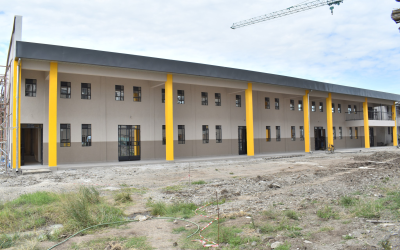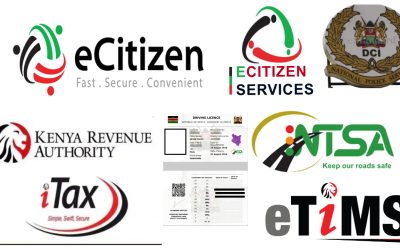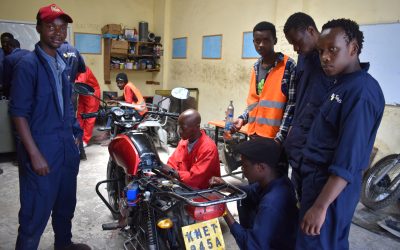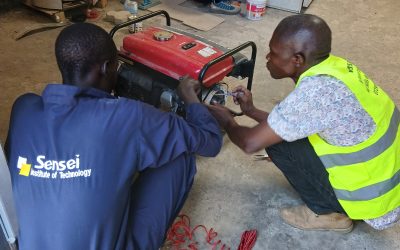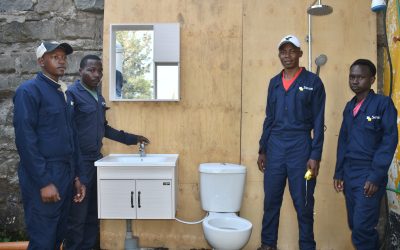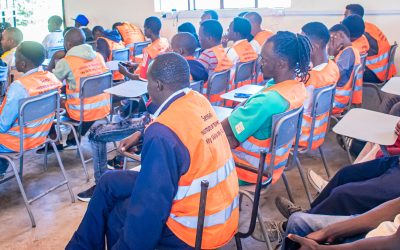First Aid in Kenya & Africa: Comprehensive Global Guide to Saving Lives
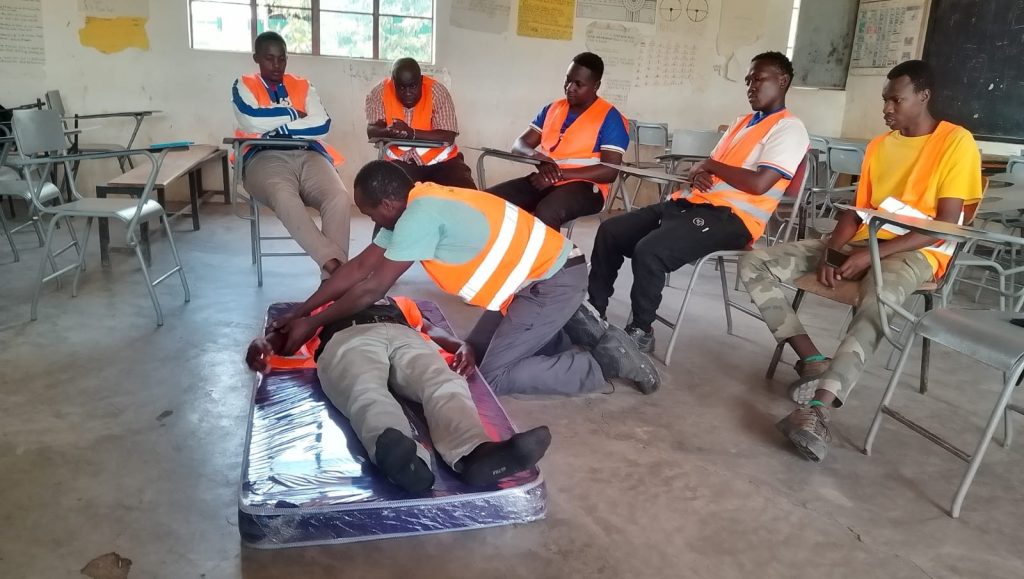
First aid is the immediate assistance given to a person suffering from a sudden illness or injury, before full medical care is available. Its key aims are to preserve life, prevent further harm, and promote recovery.
In a country like Kenya, and broadly across Africa, being equipped with first-aid knowledge is particularly important given resource constraints, roads and remote areas, and busy workplaces. This guide provides a comprehensive overview: global basic principles, regional/continental considerations (Africa), and Kenya-specific legal/regulatory context and practices.
1. What is First Aid & Why It Matters
Definition
First aid = the initial help or treatment given to someone with an injury or sudden illness, until professional medical services arrive.
Core objectives
- Preserve life: stop life-threatening conditions.
- Prevent further harm: e.g., stop bleeding, immobilize fractures, avoid infection.
- Promote recovery: basic care to reduce complications and help healing.
Why everyone should know it
Emergencies can happen anytime — home, work, school, traffic, rural setting. Having some first aid knowledge means you can make a difference.
In Africa, where advanced medical care may be delayed because of infrastructure or distance, good first‐aid makes an even bigger difference. The manual “First Aid for First Responders in Africa” is an example tailored to those realities.
2. Global Basic First Aid Steps
Here are the general steps you should follow when you encounter someone needing first aid:
2.1 Scene safety / Assess
- Check the scene is safe for you, the victim, and bystanders. Don’t rush into danger.
- Ask: Is the person responsive? Are there hazards (fire, traffic, electricity, collapse)?
2.2 Call for help
- If it’s serious (unconsciousness, heavy bleeding, choking, major trauma), call emergency services.
- Get help from others if possible.
2.3 Provide care appropriate to what you find
- Open airway, check breathing, pulse (for trained person).
- Control bleeding, treat shock, immobilize fractures, etc.
- Use the “ABCDE” or similar protocols (Airway, Breathing, Circulation, Disability, Exposure) in many contexts.
2.4 Monitor & transfer
- Keep observing until help arrives. If condition worsens, adjust care.
- Transfer to professional medical care as soon as feasible.
2.5 Use a first-aid kit
- A well-stocked first-aid kit is a key support. It should have gloves, dressings, antiseptics, bandages, scissors, etc.
3. Common Emergency Scenarios & What to Do
Here are typical situations and basic first aid responses. Note: Always follow local protocols, call for professional help when needed.
Cuts, bleeding
- Apply direct pressure to stop the bleed.
- Clean wound (if minor) and dress with sterile gauze/bandage.
Burns & scalds
- Cool the area with clean running water (if available) for 10–20 minutes (minor burns).
- Cover loosely with sterile dressing; don’t apply creams unless you’re trained.
Fractures & sprains
- Immobilize the limb (use splint or pad) and minimize movement.
- Apply cold pack (for sprains) to reduce swelling, elevate if possible.
Choking
- For conscious adult: encourage coughing; if fails, perform abdominal thrusts (Heimlich manoeuvre) if you’ve been trained.
- For unconscious: open airway, start CPR if no breathing.
Unconscious but breathing
- Place in recovery position (on side, head tilted, airway open) to prevent airway blockage.
Cardiac arrest / no breathing
- Start CPR (chest compressions + rescue breaths if trained) until help arrives.
Poisoning, bites, stings
- Try to identify the substance or animal.
- For snakebites: keep the victim calm, immobilize the limb, move to hospital.
Shock
- Lay the person down, elevate legs (unless spinal injury suspected), keep warm; monitor vital signs.
4. First Aid in the African Context
Resource‐constrained settings
In many parts of Africa, immediate professional help may be delayed because of distance, transport, infrastructure. Therefore:
- Training of lay persons is critical (community members, drivers, teachers). The “Basic First Aid for Africa” manual was created for this.
- Use of simple protocols and locally available materials is important.
Typical regional injury/illness patterns
For instance, in western Kenya among leading causes of injury are road-traffic accidents, falls, dog bites.
Training & capacity building
- Non-profit and NGO programmes (e.g., the Kenya Red Cross Society) help promote first aid awareness and training.
- Community first-aid programmes may also use motorcycle taxi drivers or lay responders as first responders (see “Lay First Responder” model).
Local adaptation
Equipment, materials and methods may need to be adapted: for example, dressings, splints, improvisation when standard devices not available. The manual for “First Aid for First Responders in Africa” takes this into account.
5. First Aid in Kenya: Legal & Regulatory Framework
Workplace regulations
- Under the Occupational Safety and Health (First Aid in the Workplace) Regulations, 2024 (Kenya), first aid is defined as treatment “for the purpose of preserving life and minimising the consequences of injury until assistance is sought from a medical practitioner…”
- The regulations set duties of the employer/occupier: annual first aid audit, providing first aid kits/rooms, training, etc.
- For example: every workplace must have at least one trained first‐aider depending on staff numbers.
Legal requirement for first aid boxes
- Under Occupational Safety and Health Act, 2007 (Cap. 236A) Section 95 in Kenya, every occupier shall provide and maintain, “so as to be readily accessible, a first-aid box or cupboard of the prescribed standard.”
Training curricula
- The Ministry of Labour & Social Protection (Kenya) provides curricula for first aid training (e.g., DOSH-6 First Aid Curriculum) to standardize training content.
Local organizations & resources
- Sensei Institute of Technology offers first-aid guides and training in Kenya.
6. Building & Maintaining a First Aid Kit
Minimum required contents
While contents vary by context and workplace risk, key items include:
- Sterile gauze pads, dressings, bandages
- Antiseptic solution, gloves, adhesive tape, scissors, tweezers
- Emergency contact information, first aid manual.
Storage & access
- Keep in a clearly marked box/container (“FIRST AID”).
- Ensure it is readily accessible and staff know its location.
Regular check & audit
- Items must be inspected, expired items removed, replaced. In workplaces in Kenya, annual audits are mandated.
Adaptation for home/community use
- For households, travel, rural settings: include basic items such as gloves, dressings, antiseptic wipes, roll of bandage, small cold pack, flashlight, whistle, emergency contacts.
- Tailor the kit to local risks: e.g., snake-bite kits (where applicable), water purification tablets, etc.
7. Training & Certification
- It is highly recommended to take certified first-aid courses. These cover theory, hands-on practice (CPR, choking, bleeding control).
- In Kenya, approved first aid training institutions deliver certificates which may be required in workplaces.
- Refresher training is important: skills fade over time.
- For workplaces: designate persons responsible for first aid, who know procedures, kit, how to call for help.
8. Challenges & Considerations in Africa and Kenya
- Delayed access to advanced care: transport, roads, ambulance services may be slow → amplifies importance of first aid.
- Resource limitations: equipment, supplies, trained personnel may be scarce → improvisation and community training are key.
- Cultural & language diversity: training materials and programmes need to be locally adapted.
- Prevalence of certain injuries: e.g., road traffic accidents, falls, dog‐bites, burns particular to certain regions.
- Workplace safety enforcement: while laws exist, implementation may lag; so private initiative, community awareness matter.
- Community engagement: lay responder programmes (drivers, community volunteers) can help fill gaps.
9. First Aid for Specific Settings
At home or in community
- Educate family members in basic CPR, choking relief, burns and cuts.
- Keep a home first aid kit, store emergency contacts clearly.
- For rural settings: consider first aid training for local community, link with nearest health facility.
In schools
- Schools should have designated first aiders, first aid kit, protocols for emergencies (injury, asthma attack, allergic reaction).
At work or industrial settings
- Employers must comply with Kenyan regulations: first aid kits, trained staff, first aid rooms (for large workplaces) etc.
- Conduct risk assessments and adapt contents of kits accordingly.
On travel, in remote or outdoor contexts
- Bring portable first‐aid kit, know how to contact emergency services, plan for evacuation.
- Be aware of local hazards (snake‐bite, dehydration, heat‐stroke).
10. When Not to Rely Solely on First Aid
First aid is not a substitute for professional medical care. You should seek advanced care when:
- The injury or illness is life‐threatening (unconsciousness, breathing stopped, heavy bleeding).
- You are unsure what to do or the condition worsens.
- Specialized treatment is required (fracture, head injury, chemical burn, complex poisoning).
- First aid has been administered but the person’s condition isn’t improving.
11. Promoting First Aid Awareness: What You Can Do
- Get trained: Enrol in a certified first aid course in your area (Kenya has many providers).
- Teach others: Families, schools, workplaces.
- Keep a kit ready: At home, in car, at work. Check and restock regularly.
- Advocate in community: Share awareness that first aid saves lives; in Kenya many initiatives target this.
- Ensure your workplace is compliant: If you are an employer or worker, check that first aid provisions meet legal standards.
- Stay updated: First aid science evolves; refresh skills and knowledge periodically.
12. Summary & Key Takeaways
- First aid is the immediate care given in emergencies until professional help arrives.
- It is globally relevant and critically important in Kenya/Africa where delays and resource constraints exist.
- Key steps: Ensure safety → Assess → Call for help → Provide care → Transfer or monitor.
- Having and maintaining a first aid kit is essential.
- Training and certification boost readiness and confidence.
- In Kenya, there are solid legal frameworks for workplaces and resources like St John Ambulance Kenya and Kenya Red Cross.
- First aid isn’t a substitute for medical care, but it can save lives and reduce harm.
- Everyone — not just medical professionals — should know basic first aid.
